

 STUART JORDAN looks at this transportation idea which never took off...
STUART JORDAN looks at this transportation idea which never took off...
On a recent trip to Glasgow I visited the Kelvingrove Art Gallery and Museum. This large red sandstone building was constructed in 1901 near the campus of the University of Glasgow and holds a variety of exhibits covering history, zoology, and transportation, as well as paintings and sculptures.
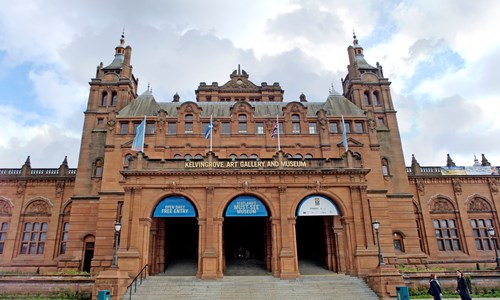
Kelvingrove Art Gallery and Museum
One exhibit caught my eye – a whole section about the Bennie Railplane. This local Glasgow invention was something that I’d not heard about before, so I decided to find out more once I was back home.
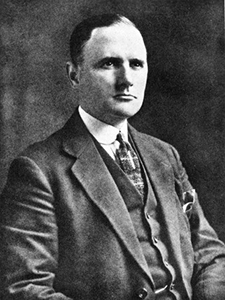
George Bennie (1892-1957)
George Bennie was born in Auldhouse, Glasgow in 1891. The son of an engineer, throughout the 1920s Bennie patented many different aircraft-related inventions. He then used this knowledge to try to improve ground-based transportation.
Bennie’s idea was remarkable – trains would ditch coal-fired steam power and instead be driven by propellers. A similar idea was being worked on in Germany at around the same time (the Schienenzeppelin, which holds the world record for the fastest petrol rail locomotive), but Bennie’s plan was different – the Railplane would not run along rails on the ground, but along a single suspended rail. This meant that it would not be slowed down by other vehicles on the ground, and it could be built economically as the rail gantries could be built above existing railway lines – there would be no need to purchase extra land.
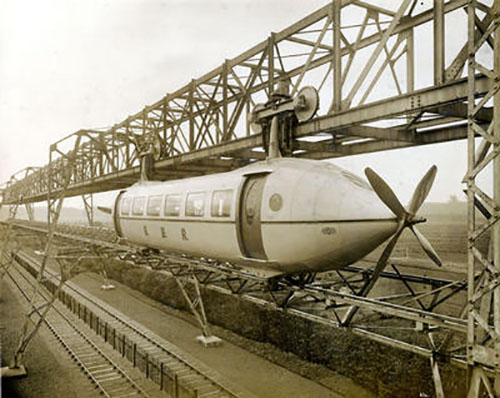
Bennie's prototype
He applied for a patent in 1921 which was granted two years later. The design of the Railplane took many cues from aircraft design and looked more like something out of a science fiction story than a contemporary rail locomotive.
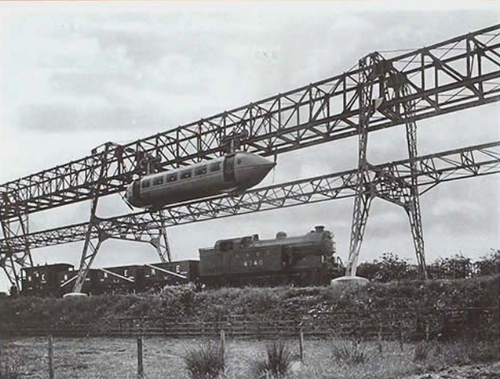
The prototype running above a goods train at Milngavie
In 1930, on the LNER siding to Burnbrae Dyeworks near Milngavie, a prototype was built. The rail gantry was 130 yards (119 metres) long and comprised of an overhead monorail and guide rails beneath. To build the locomotive Bennie turned to an airship engineer – Hugh Fraser of William Beardman & Co Ltd in Renfrewshire. The Railplane itself was elegant and streamlined, reminiscent of an airship gondola – the same aesthetic which would inspire the design of the A4 Locomotive a few years later.
Pathe News reports on the Railplane.
Each car was to be powered by a motor-driven propeller at each end, which could be removed to couple cars together. Bennie believed that his invention could have been capable of 120mph (Glasgow to Edinburgh in 20 minutes), but due to the length of the test track the Railplane never reached anywhere near that.
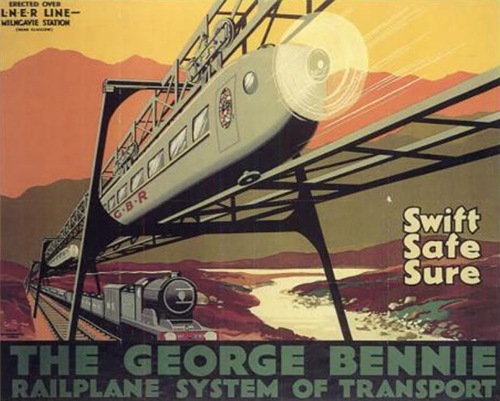
Exciting artwork was produced to promote the Railplane
Once the prototype was up and running Bennie went on a marketing blitz to gain funding. Brochures were produced and test-runs for dignitaries were put on. Despite enormous interest from around the world, Bennie could not secure funding to build a full length Railplane line. It’s even thought that the railway companies themselves had some hand in the failure of the Railplane, fearing that it would be so efficient as to reduce revenue on their lines.
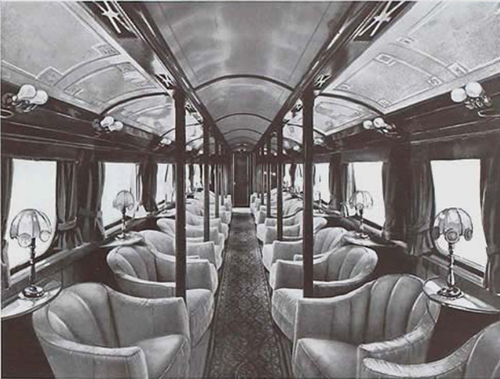
The stylish interior was probably made more to impress wealthy investors than to show what the real thing would be like
Bennie went bankrupt in 1937 after spending all his own money on the project. The test track was pulled down for scrap in 1956, with Bennie himself dying just a year later. The Bennie Railplane remains one of transportation history’s many ‘what-ifs’.